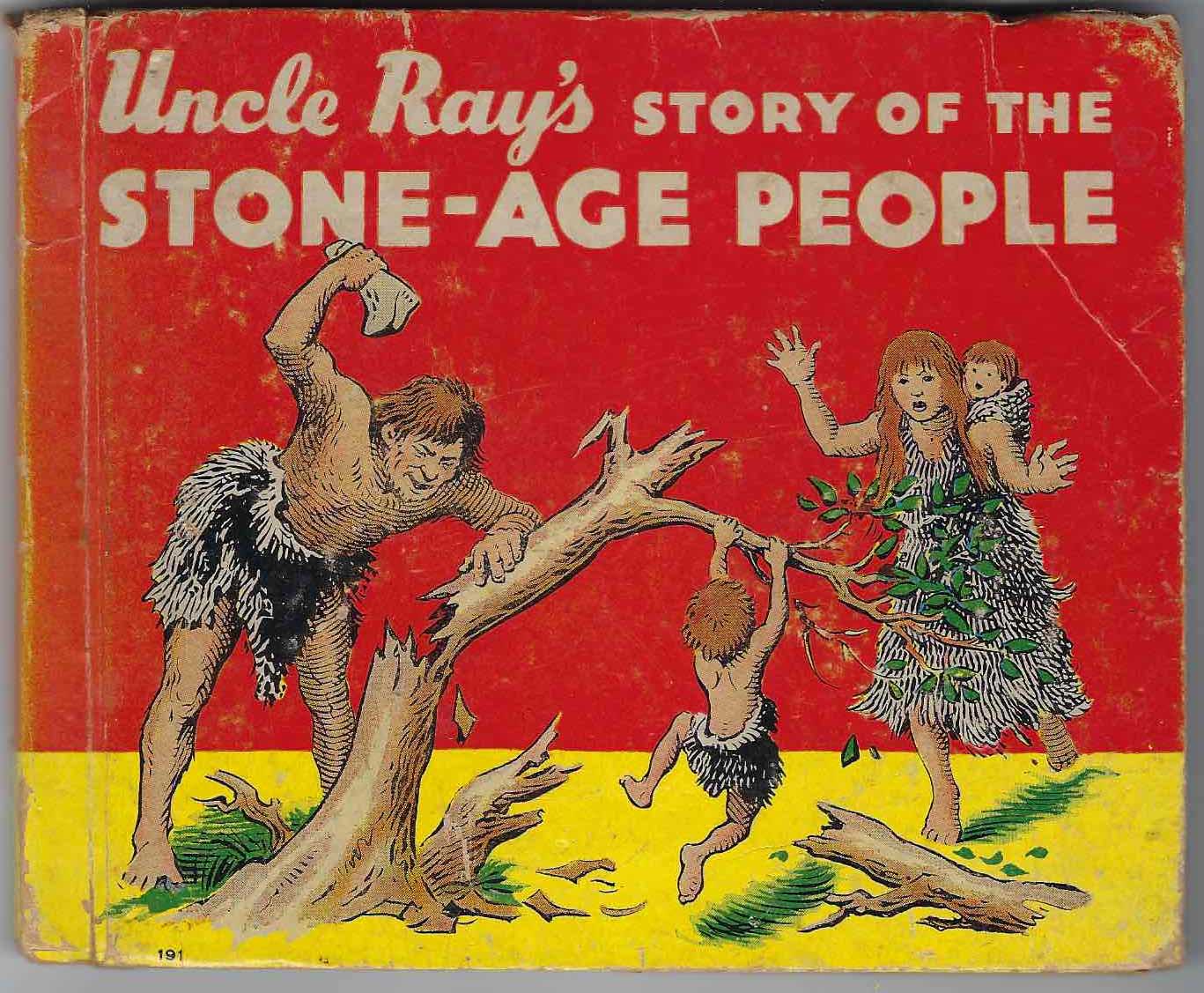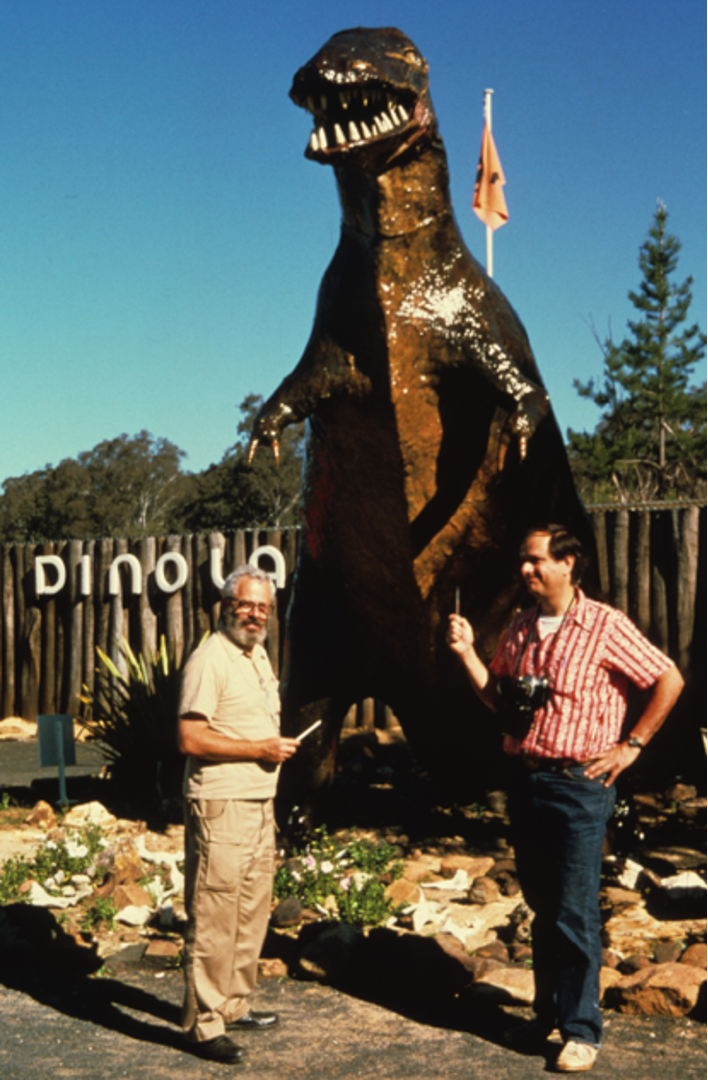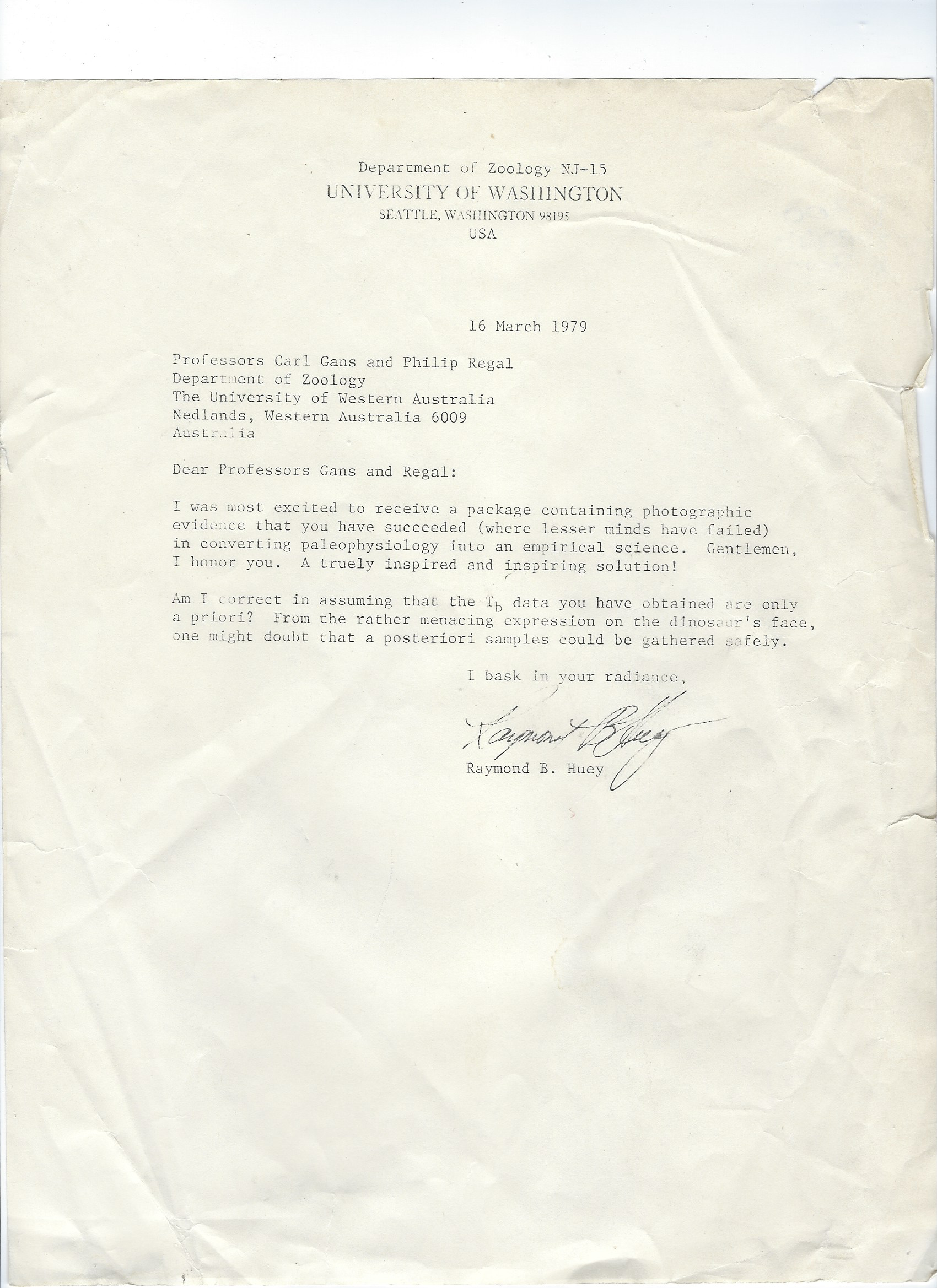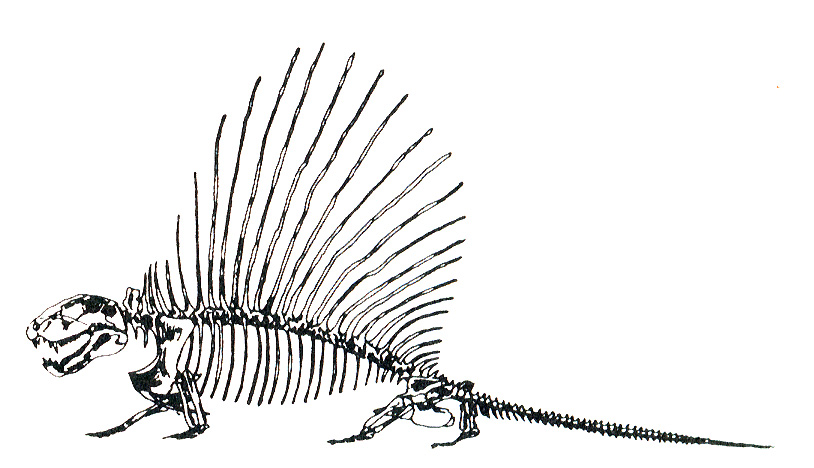47 Encounters with fossils
Although we live in the present, I sometimes find myself drawn back in geological time. Fossils have been magical and bizarre to me,. As a kid I was briefly tempted to become a paleontologist (below), but that was before I learned that I am challenged by three-dimensionality and by distinguishing one bone from another. Paleontologists who share these maladies must be selected against unless, that is, they stick with theory. That I can do.

47.1 La Brea Tar pits
When I was in early elementary school (probably age 6 or 7), my family drove from Long Beach up to the La Brea Tar Pits in Los Angeles. I was mesmerized by these fossils, especially by the saber-toothed cats, and by the concept of so many animals being trapped in tar for eternity. How could they have been trapped?
I wondered what it might have been like to have lived back then and what I would do when I spotted a saber-tooth hunting me. I wondered if these cats would chip the huge incisors when biting down on a hard bone. And if these cats were powerful predators, why weren’t they still around? These were exciting thoughts and questions for a young kid.
I proudly announced to my Mom that I wanted to be a paleontologist when I grew up. I was young, but I distinctly remember her response:
“Ray, there’s no money in it.”
I appreciated the wisdom in her advice, and so I became a biologist.
47.2 Hot blooded dinosaurs
After the Kalahari, I restarted grad school at Harvard. I went to a party one night and met a long-haired (butt length) character named Robert Bakker. He asked what I studied, and I probably said something like lizard ecology. I asked what he did, and he said I study dinosaur physiology.
I think I almost choked on my beer. Studying the physiology of live lizards is difficult, so how could one study the physiology of dinosaurs?
Bakker was an early and unrepentant proponent of “hot-blooded” dinosaurs. He was brilliant, creative, provocative, irreverent, artistic, and funny, all at the same time.
Bob and I were teaching assistants in an anatomy-physiology course. I covered physiology labs, and Bob handled the morphology ones.
Bob’s research ideas were controversial, but he was a larger than life personality. He brashly forced traditional paleontologists to question existing dogma, even though he himself was a ‘true believer’ in his cause.
In 1979 I received a package and photographic slide from Carl Gans and Phil Regal, who were on sabbatical leaves in Australia. The slide shows the two of them sending in front of a sculpture of Tyrannosaurs rex and holding a Schultheis thermometer, used by herpetologists for decades to measure the body temperatures of amphibians and reptiles. Carl’s penciled note on the margin of the slide read,
“Dinosaur physiology is at last an empirical science.”

I got a good laugh from their slide and caption, and I responded to them by mail. Here’s a photocopy of my letter.

47.3 Dimetrodon
C. Richard Tracy spent a sabbatical year in my lab in the late 1970s. Dick added expertise in biophysics, computers, and applied math. Plus, he was a gifted teacher and mentor. At his recommendation, I bought my first personal computer (an Apple II). I got to know Christopher, Dick’s son, who was very young but already a budding ecologist.
Dick suggested that we look Dimetrodon, a lineage of synapsid reptiles that lived 295–272 million years ago. These spectacular reptiles had large sails, inviting studies as to their function. Several species range in size from 50 to 250 kg – larger than an African lion! Sail size increased dramatically with body mass this lineage: the bigger the Dimetrodon, the much bigger the sail.
Dick proposed that we evaluate the sail’s effectiveness as a heat absorber and as a heat radiator. Heating and cooling are challenges for large ectotherm – especially ones bigger than a lion. But if a cool Dimetrodon stood cross ways to the sun, its sail could absorb solar radiation; and blood flow through the sail could shunt heat to the body, quickly raising body temperature. Conversely, the sail could serve as a heat radiator for overly warm Dimetrodon. probably heat far more quickly than a sailless version. If this held, it might explain how large Dimetrodon could have evolved.
Dick and Scott Turner (one of Dick’s students) developed a biophysical analysis of heat gain. I calculated the relative surface area of sails of each species. The biophysical model predicted the the largest species could have heated as quickly as the smallest species, just by virtue of its relatively large sail. None of this was testable, but it was plausible. Some subsequent work (Tomkins et al. 2010) has questioned our conclusions but did not use a biophysical model.

47.4 Oxygen and paleo distributions
Around 2003 Peter Ward, a distinguished and creative paleontologist, walked in my office and asked, “Do you know Berner’s work on oxygen levels during the Phanerozoic?” (the Phanerozoic covers the last 560 million years). I said yes, as I’d read an important paper by Jeff Graham, Nancy Aguilar, Robert Dudley, and Carl Gans concerning the rise and fall of giant dragonflies during the late Paleozoic.
Peter was interested in the mass extinction at the end of the Permian, when (according to Berner) O2 levels had dropped from ~ 30% of atmosphere in the Permian, to perhaps 13% in the Triassic. [Note: present-day O2 levels are about 21%.] Peter assumed I knew something about respiratory physiology and hoped I could suggest morphological traits that might explain why a few – but not most – species survived the O2 low.
In fact, I knew little about respiratory physiology and was unable to suggest any explanations. But I was intrigued by Berner’s data, and Peter’s visit coincided with my work on mountaineering data. My mind started to wonder: If humans had been alive in the Permian and if O2 levels at 30%, I’d bet they could climb to a height much higher Everest. However, if humans had been alive in Triassic, with O2 levels only 12% or 13%, I suspected that they could not have even reached Everest base camp.
I was just playing, but I immediately started wondering whether I could calculate how high a hypothetical ‘paleo-mountaineer’ could go, if all I knew was the percentage of O2 in the atmosphere. I had no idea whether this could be done but wanted to try.
This turned out to be easy. I knew that Ang Rita Sherpa had summited Everest (8890 m) in December 1987, and that the barometric pressure that day was low (Ward et al., 2000). With some algebra (or a simple graph), I estimated how high Ang Rita could have climbed if he actually climbed in the spring (main climbing season), when barometric pressures are much higher than in winter (cold air sinks, lowering pressure at high elevation). I calculated that Ang Rita could reach 9.0 km in spring. I set this altitude as a conservative upper bound for humans.
Next I used Berner’s estimates of O2 levels to calculate how high hypothetical “paleo-mountaineers” (or really Ang Rita) could have climb throughout the Phanerozic.
This was fun and challenging to do, especially because I had previously developed only a few mathematical models. We submitted our note to the Journal of the American Medical Association (JAMA), and much to our delight the paper was accepted. This was my second JAMA paper!
Before we submitted to JAMA, I started thinking about the end-Permian extinctions that Peter mentioned in our initial conversation. I suddenly realized that the presumed low levels of O2 in the Triassic would have retricted dispersal over mountain passes, whereas the high levels O2 in the Permian would not have restricted dispersal. In other words, “mountain passes were higher in the Triassic” – this was Janzen’s physiological metaphor mutated to a new guise (see Chapter 29)!
This thought train presented a new look at dispersal during the Permian and Triassic. During those periods, the Earth’s continents were mostly fused together (‘Pangaea’). Consequently, paleontologists considered Pangaea to be a superhighway, allowing animals to move freely across the continents. However, when continents collide, mountain ranges are formed, and because O2 was low in the Triassic, dispersal must have been very limited – even low passes would have been physiological barriers to dispersal. Pangea was not a superhighway.
We submitted a manuscript to Science. The reviews were positive, except for one:
“We now have models that depend on models [Note: the reviewer was referring to Berner’s prior models] - no data. This paper combines a GEOCARB type model for O2 and CO2 with a response function for O2 and CO2 in ectotherms to suggest that vertebrates at high altitudes would have been physiologically challenged following the end-Permian extinction. The results are not supported by data. Be that as it may - the authors simply forgot about ecology, or evolution. Let`s assume they are correct - the effect would potentially be to have corralled the organisms to lower latitudes (a similar effect occurs during glacial cycles in the contemporary world), or to allow organisms to adapt to a lower metabolic rate (which must have been the case throughout the Triassic and early Jurassic, according to Fig. 1A presented in the paper).
In essence, this paper is a trial balloon - showing off an idea, presented as a model and parading as science. This is a fine intro to a Ph D thesis - but is not suitable for publication in Science - maybe in the journal of Theoretical Paleoecology (should such a journal be created).”
Fortunately, the editors at Science ignored that review and published our paper. This and the associated JAMA paper are among my favorites, probably because they both challenged me to think and work in ways that were novel.
Many submitted papers receive critical reviews, which can sometimes be nasty. The above review was one of the three most unfavorable reviews that I have received. Learning to deal with such reviews can be a challenge, especially for young scientists who are learning where they stand in the world of science. When my own students showed me bad reviews, I’d steer them to Butch Brodie’s website Ghosts of reviewers past. I’d sometimes go there myself, when I received negative reviews.